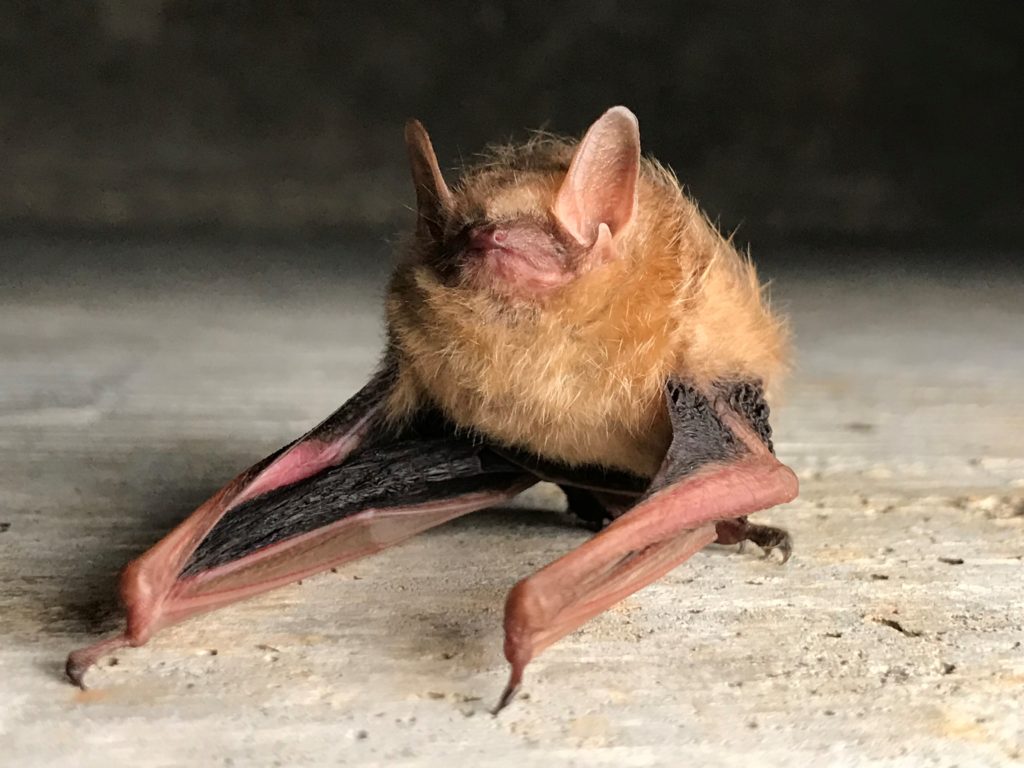Texas bats to emerge soon
Learn more about the risks, benefits of bats
Bats are beginning to become active in some southern parts of the state, and while cold fronts could reduce activity, it is a good time for the public to be aware of the benefits and risks associated with Texas species.

Janet Hurley, Texas A&M AgriLife Extension Service integrated pest management specialist, Dallas, said Texas residents should expect bat activity to increase as temperatures climb.
Hurley said bats are typically more prevalent in areas with agricultural fields in proximity, but cities like Houston, Austin, San Antonio, Fort Worth, Waco, Temple and College Station and the surrounding suburbs have higher bat populations.
Bats will soon be exiting torpor as temperatures allow them to activate and seek food and water, Hurley said.
“Activity will be on the increase over the coming weeks and months. Once evening temperatures are consistently 70 degrees, it will be game on,” she said. “That tells them it is time to be out there feeding on insects.”
Billion-dollar bats

Bats consume large amounts of insects, including crop-damaging pests, and are considered a beneficial species, she said. But they can also be a nuisance and pose a public health risk. It is important for people to be mindful of their presence and role in the environment and cautious during encounters.
There are 33 bat species in Texas, representing one of the most diverse bat populations in the U.S. — a population that is growing.
Bats roost in various habitats, including caves, trees and bridges, but they are increasingly found in buildings. They typically roost near food or water sources, but some bats travel miles each night to eat their favored foods.
Texas bats consume some mosquitoes, Hurley said, but their diets consist primarily of moths, including corn earworm and armyworm moths, and beetles. This diet plays a large role in controlling insect pests in agriculture. It is estimated Texas bats eat enough insects to save producers over $1.4 billion annually in pest control costs alone.
“They literally are billion-dollar bats,” she said. “We have resident bats that never leave, but many species migrate into Texas from Mexico, and some migrate from Mexico up to Wisconsin. Many times, their migration will coincide with the migration of the various moths. They can’t consume enough, but they try.”
Take precautions, avoid contact
Roosting sites in buildings can increase the chance of interactions with humans and the annoyances of noise, odor, piles of droppings and the potential danger of rabies.
Only a tiny percentage of bats in colonies carry rabies, but any bat found on the ground is more likely to be sick or injured. Signs of possible rabies infection are flying in the daytime, dirt in the bat’s mouth or teeth, abnormal sounds, cloudy eyes, dehydration, mucous in the nostrils, breathing difficulties and spastic movements or paralysis.
“It’s best to avoid handling bats under any circumstance,” she said. “They may seem cute, but a grounded bat during daylight hours, as with any nocturnal animal out during daylight, there is a greater chance they have rabies or some other zoonotic disease.”
Hurley said a bite, scratch or even saliva transmission could be problematic.
If there is any chance a person may have been bitten or had direct contact with a bat, the animal should be captured and submitted to the local health department for rabies testing. For more information about rabies, visit the Texas Department of State Health Services Infectious Disease Control website.
Bat in the house?
Typically, bats that enter a home do so by accident. If they do not find their way out, they can be safely captured by waiting until the bat lands on the wall or ceiling.
Carefully place a box or coffee can over the bat and slide a piece of cardboard between so that the bat remains inside the container. If there is a reason to believe the bat could be sick and tested for rabies, call your local law enforcement or animal control to have it picked up. If no one comes in contact with the bat, it can be turned over to a wildlife rescue organization or released outside away from people and pets, preferably after sundown.
“Be calm because the more you get excited, the more they will get excited,” she said. “Put on some good leather gloves, let them land somewhere and then use anything like a shoebox or small trashcan and cardboard or something to scoop them into it. If they just flew in accidentally and seem fine, you can take them outside, but make sure to place them somewhere they can launch from like onto a tree. Bats cannot take off from the ground like birds.”
If a bat is found in a room with an unattended child or someone sleeping or there is a reasonable possibility the person came in contact with the bat, the bat should be captured and submitted to the designated local public health agency for testing. Pets should not be allowed to interact with bats.
Bat colonies that take up residence in attics, in wall spaces or under eaves of occupied buildings can be safely evicted. Using pesticides against bats is illegal and using traps can drive bats to other areas of a structure. The best method is exclusion techniques that allow bats to exit but prevent reentry.
A free online AgriLife Extension “Bats 101” course describes practices related to integrated pest management, IPM, practices and bats as pests, how to perform bat removal and exclusion techniques, and how to solve bat problems by applying IPM techniques.


